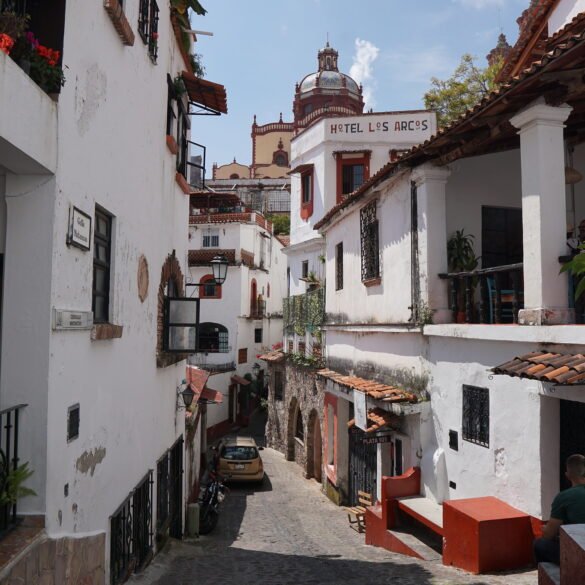As we traveled through the countryside, we were constantly distracted by the gorgeous views of mountains, herds of peacefully grazing animals, and fields of vibrantly blooming… potatoes.
“Look! Potatoes! That’s all potatoes!” Victor would exclaim, pointing out of the car window, “So many potatoes…” I nodded along as he kept pointing at potatoes over and over again. I think I counted over 20 “Potatoes!” in less than half an hour's drive. Now I know that potatoes are a Belarusian staple food, I just didn’t expect quite how much excitement a few fields of spuds would stir up.
As we kept driving, I saw a small produce stand in a large potato field and decided that we needed to stop by and take a look. I briefly mused about buying a 10-pound bag of lovely-looking potatoes, but the idea of cooking spuds for the next week’s worth of dinners didn’t appeal to me. What caught my eye were the tiny strawberries that were also for sale. They were a gorgeous shade of bright red, inside and out, and were probably some of the best strawberries I’ve ever had. At no point in my life did I expect a northern country so close to the Arctic to produce such delicious berries.
Even though these strawberries were the only berries we purchased in Norway, we ate berries almost every day. Raspberries, blackberries, blueberries, sour and regular cherries, cloudberries, red and black currants, and gooseberries were always on the menu, as long as we were willing to forage for them. If you don’t know what some of the berries on my list are, don’t worry! Neither did I. But over the last twenty years, I’ve slowly learned to trust Victor’s foraging instincts, honed by his upbringing in a small Belarusian village. Let me tell you, the first time I watched him casually pick something off a bush and plop it into his mouth, I had a mini heart attack. Victor found my terrified confusion hysterical: "Where do you think blueberries come from? A factory?”
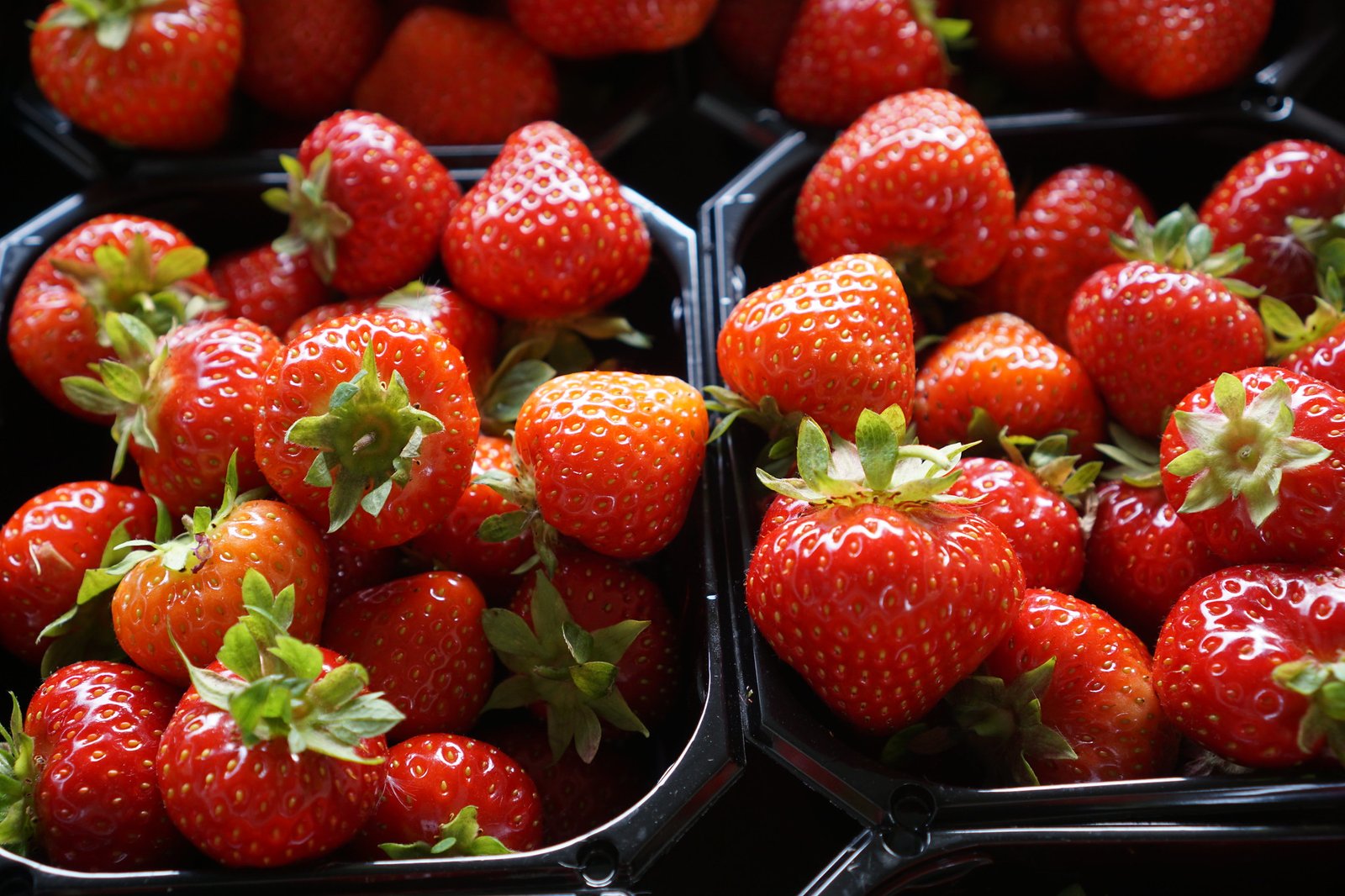
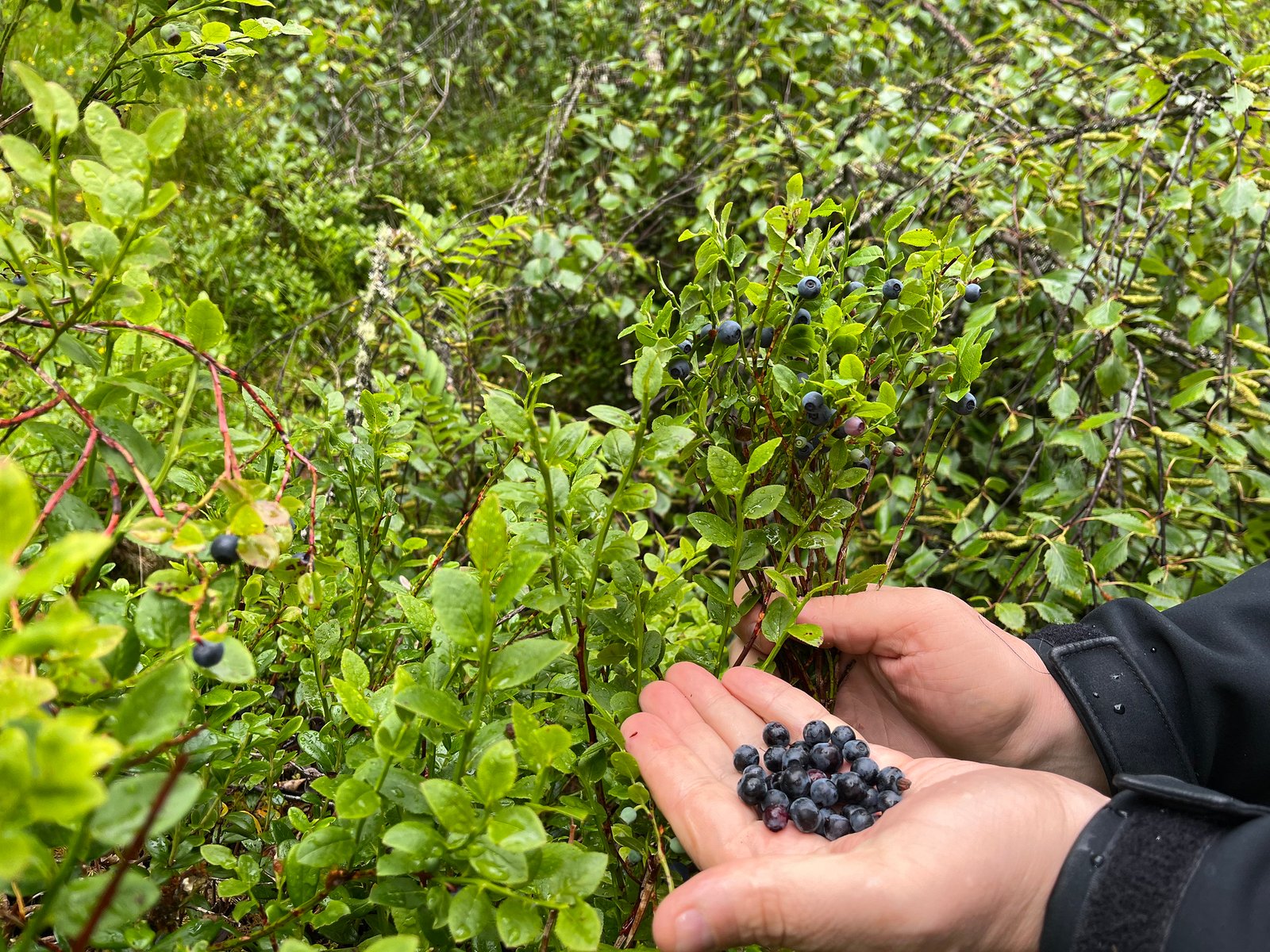
To my very reasonable question of how he definitely knew that these are in fact blueberries and not poison berries, he started describing leaves, stems, flowers, growing conditions and climate, time of harvest, smell, and taste until I got bored and wandered away. But not before taking a picture of the fruit and leaves to present for identification in case he later ends up in an emergency room. Over the years, he has never eaten anything poisonous, and I’ve stopped worrying as much about it. Even though occasionally he likes to play on my fears and pull the “I am not sure what these are called, but we had them growing around the village,” followed by puzzled chewing and “Hmm… these don’t taste the same…” a few gulps and… “I don’t feel so good…” Every time I know he is kidding, and every time I still get terrified.
I’ve seen him identify various berry bushes and fruit trees with no traces of fruit present, just by the leaves. There has also been a lot of random plant examination, followed by, “These are not going to taste great, but they are edible,” or “Don’t touch these, you’ll get sick.” (as if I would ever just start eating off a random plant!) I would use the Seek app for plant species identification, and he would be right every time.
We have foraged our way through Ireland, feasting on blackberries, and Albania with their wild strawberries, mulberry-lined trees in Georgia, and even France with pear trees growing in public parks, but Norway was something else. The sheer variety of berries growing in the wild, in parks, and lining the streets was ridiculous. It all started in Bergen when our Airbnb had a large sour cherry tree in the front yard, and our host offered for us to pick as many as we wanted. Every day, we had a few sour cherries as a nice bedtime snack after a long day of exploring the city.
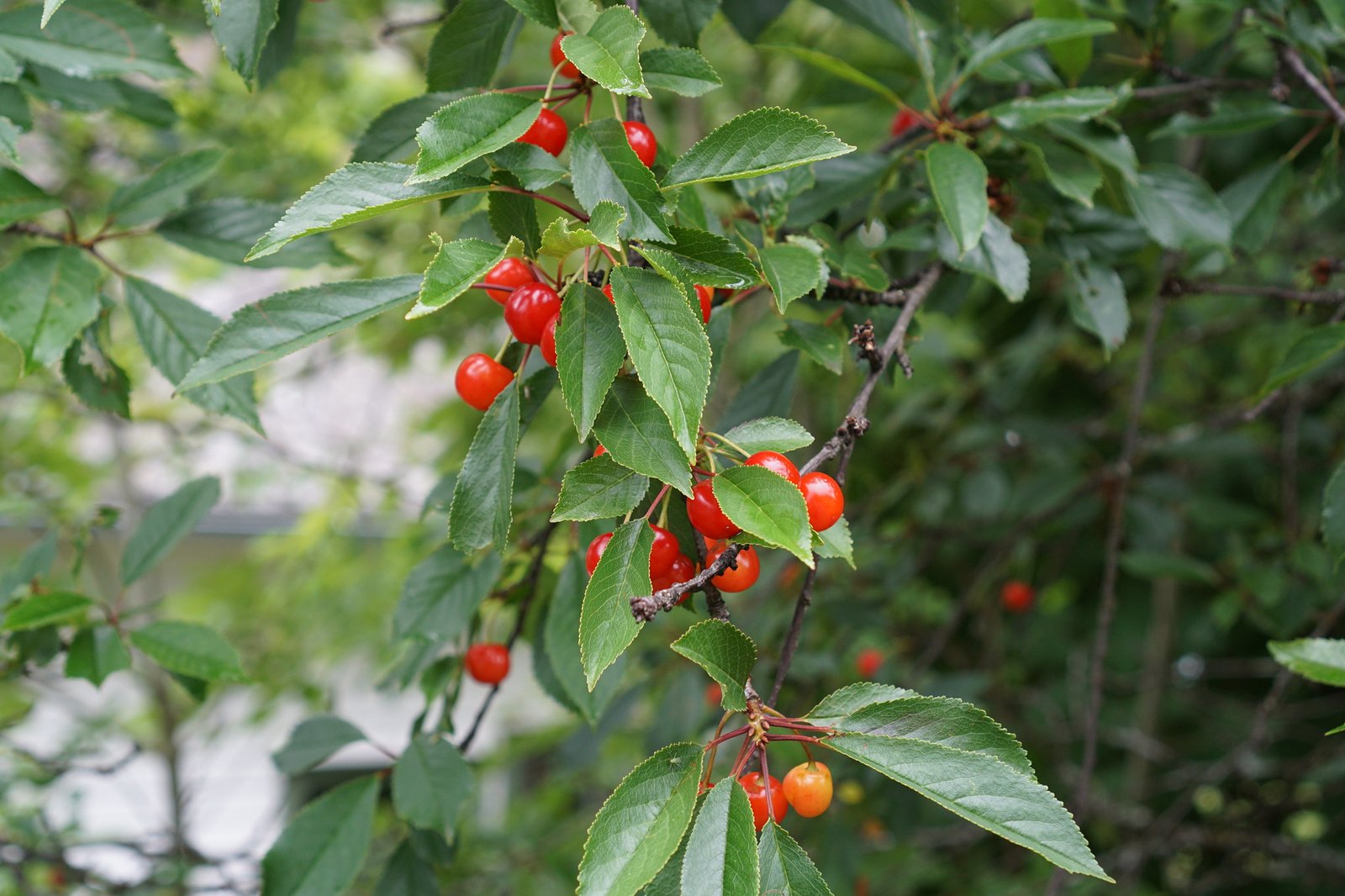

We found blueberry shrubs and raspberry bushes everywhere we went, whether it was hiking up mountains in the Lofoten Islands or walking past public parks in Bergen. While hiking up the 2,000 stairs at Reinebringen, we kept stopping for a snack of wild blueberries, tiny berries bursting with sweet, slightly tart juice. We weren’t the only ones either; plenty of older Norwegian couples were picking wild berries off shrubs as well. We found raspberry bushes in a Viking village at Gudvangen, by ancient stave churches, and just growing on the side of a road, the delicate, almost floral-tasting berries surrounded by sharp thorns. Victor, a seasoned raspberry picker, was somehow able to avoid the dense, prickly barrier and get all the way inside the bushes to pick out the ripest berries, almost ready to fall off the stem. He would casually glance inside each berry to make sure it was pest-free and bring handfuls of delicious raspberries out for me to feast on.
The red and black currant bushes and the gooseberry bushes were not as common and a delight every time we found them, as they are almost non-existent in the U.S. In fact, both currant and gooseberry bushes were banned in the U.S. until the 1960s, due to hosting a fungus that disrupted the life cycle of some pine trees, and they still haven't regained their popularity in the States. It’s a shame, really. I’ve loved gooseberries since I was a child in Eastern Europe; they are sweet and juicy with a brisk zing and unique flavor. I even enjoy eating them when they are underripe – very sour with an almost crispy texture. Black and red currants taste very different, despite being plant cousins. Black currants are rich with a deep, earthy sweetness that reminds me of red wine or dark chocolate. Red currants are more acidic, slightly floral, and have a bright, tangy taste that’s both sweet and tart.
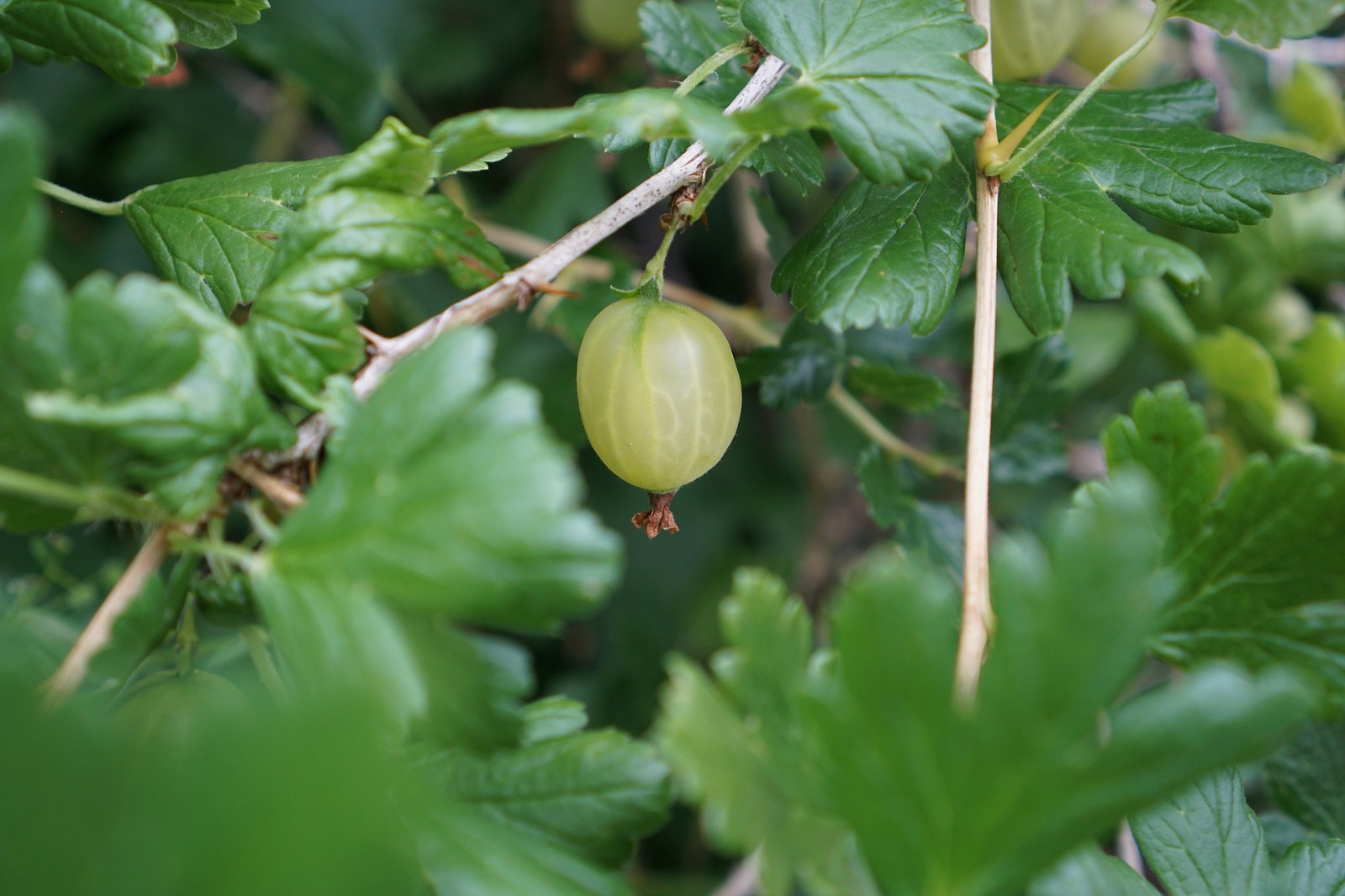
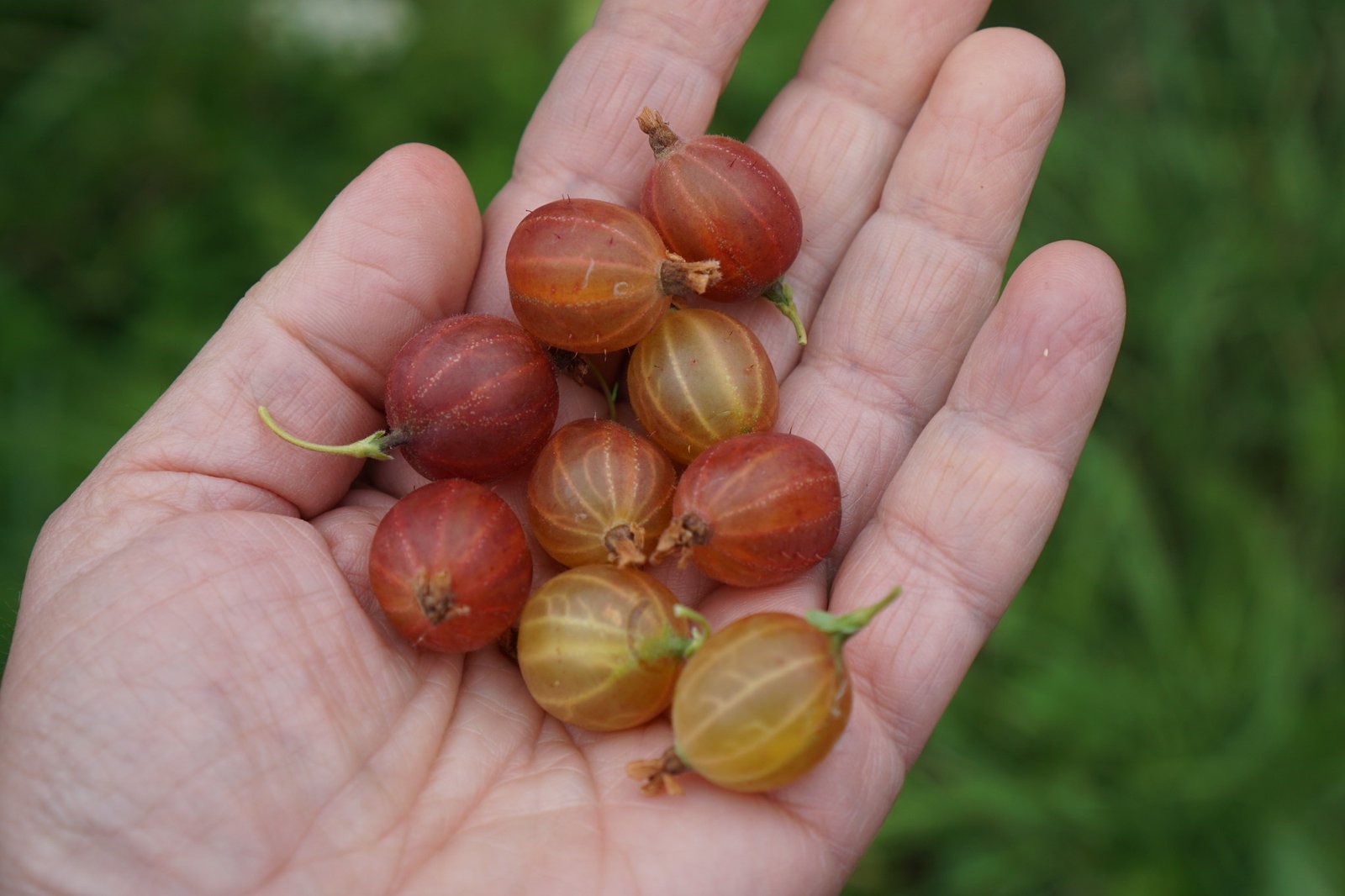
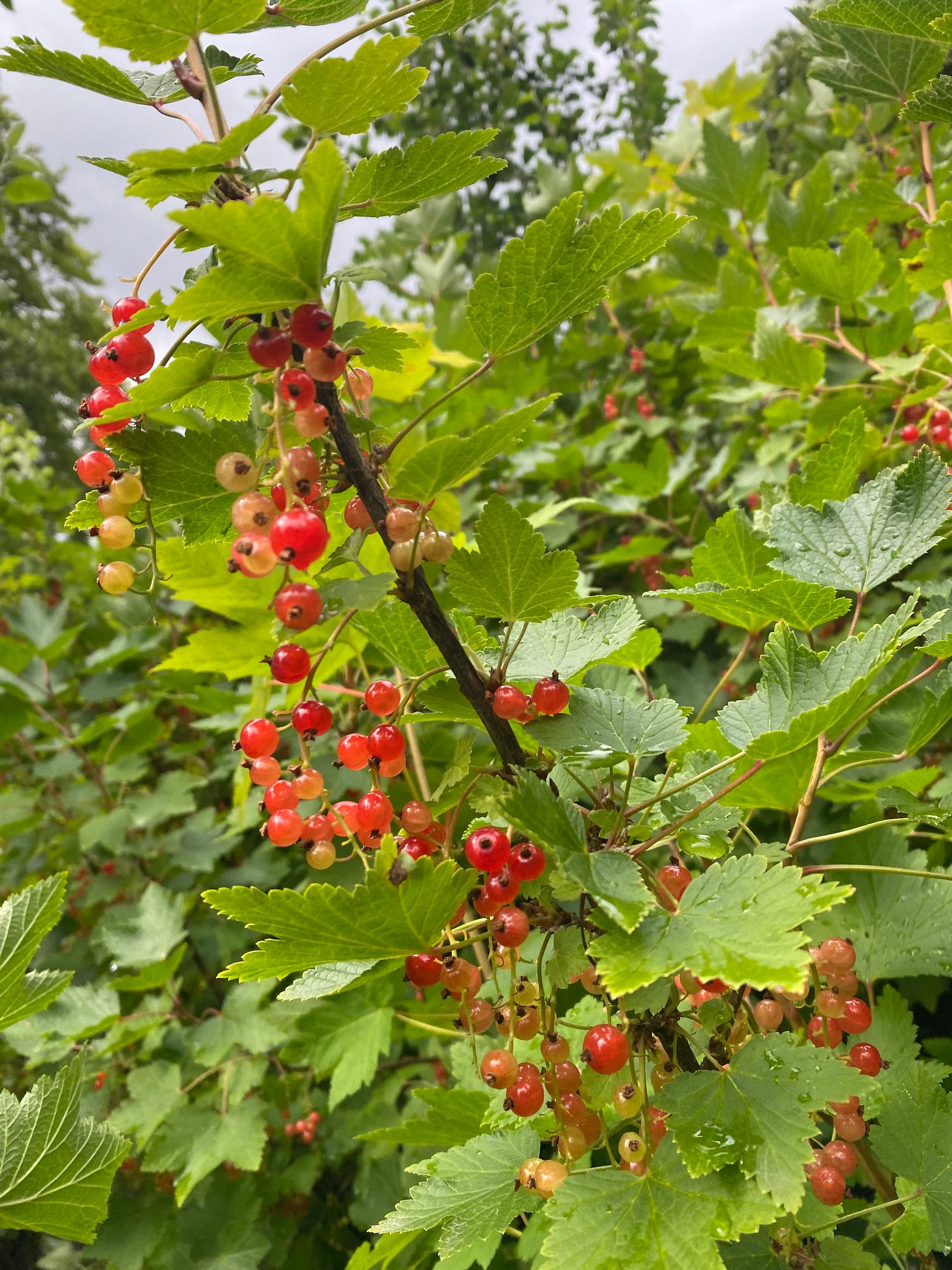
But the most surprising berry we discovered in Norway was the one we’ve both heard of but have never seen before. While hiking through a swampy area on a mountain range in the Lofoten Islands, I noticed interesting-looking berries growing in the boggy ground among moss. I bent down to take a picture of the little yellow-orange berries with a glossy surface, almost raspberry-like in their appearance. I called out to Victor, who was already forging ahead, “Did you see these?” And then, almost as a joke, “Do you think these are edible?”
Victor came back and examined the plants carefully. He smiled at me, “I don’t know what they are, but I think they are edible!” I had no idea if he was kidding or not, so I pulled out my phone and took a picture for the Seek app. The plant identification came back right away – it was a cloudberry, and most importantly, it was edible!
Musing to myself how I’d never even heard of a cloudberry, I quickly typed it into Google Translate and found out that this mysterious plant was called “moroshka” in Russian. I have heard my grandparents referring to “moroshka” berries and even read of them in Russian literature but have never seen or eaten them before. Victor, who has also heard of, but has never seen “moroshka” popped one into his mouth, chewed slowly, and cheerfully said, “Now that’s got a lot of vitamins!” That’s his code for “very sour or tart”. I gingerly tasted one and found it tart, but with a rich, complex taste that reminded me of cranberries and apricots. Even though it felt strange to pick these low-growing berries from among moss in the marshy, damp ground, we kept on snacking on these delicious little clouds of tartness.
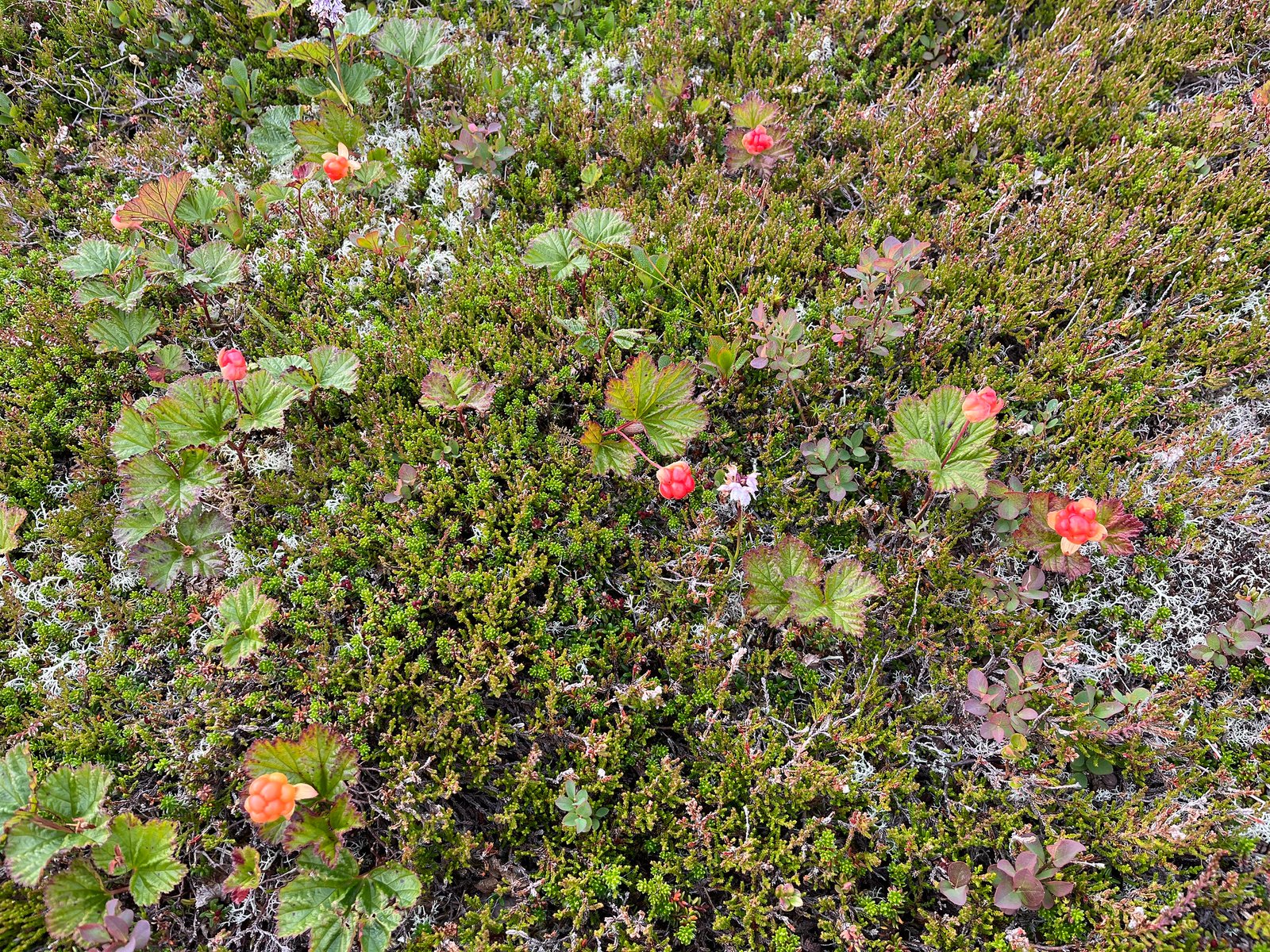
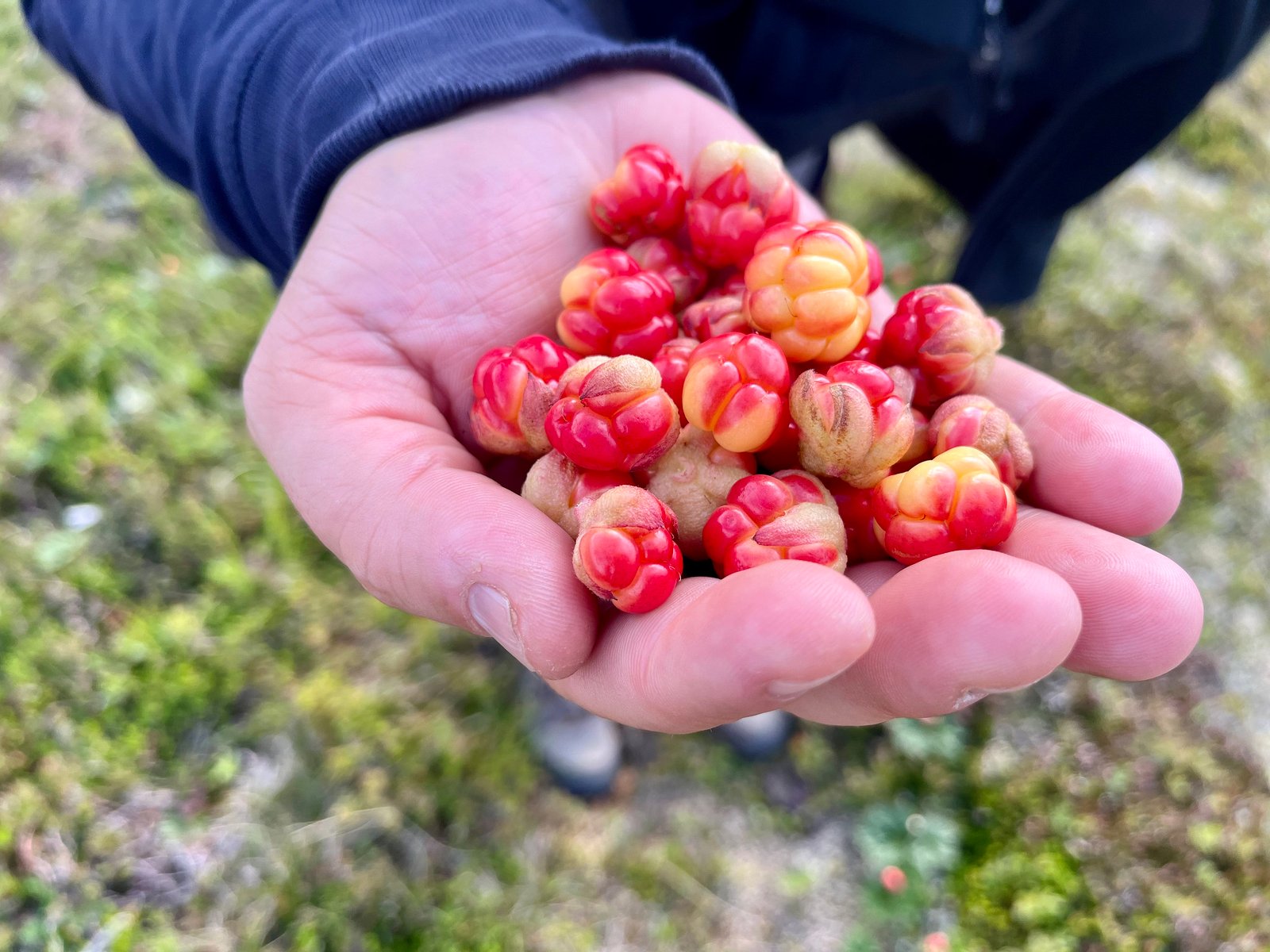
We later found out that cloudberries are occasionally sold in markets in Europe and are very expensive, as they only grow in cool, damp regions, such as artic tundra and boreal forests, and are very hard to farm. This fact elevated our random snacking experience from two weirdos eating berries out of a marsh to two prolific scavengers discovering rare priceless berries in the wilderness. At least, that’s how I’ll be thinking about it from now on.
